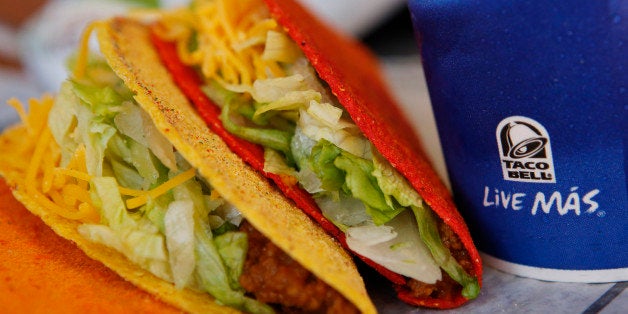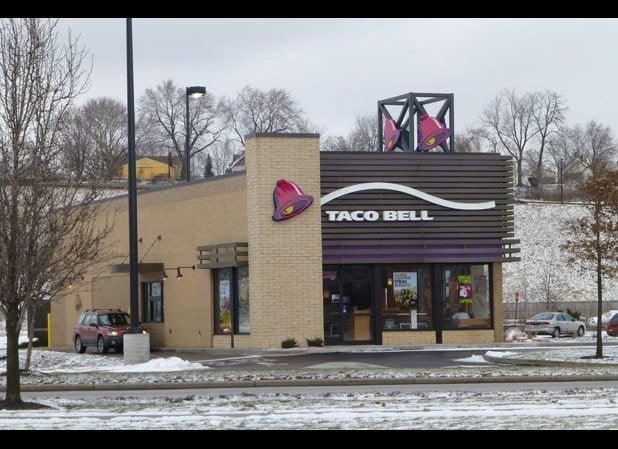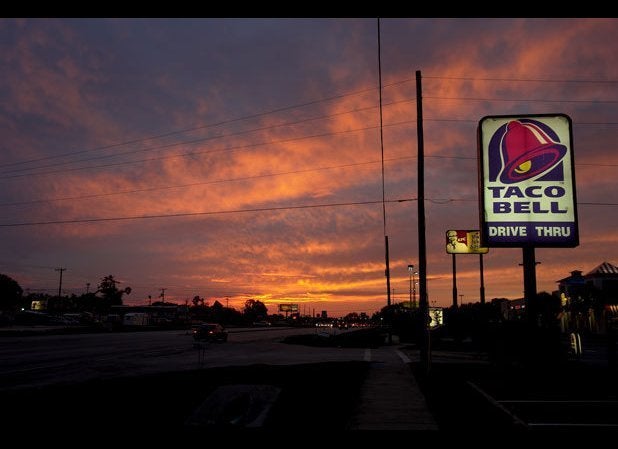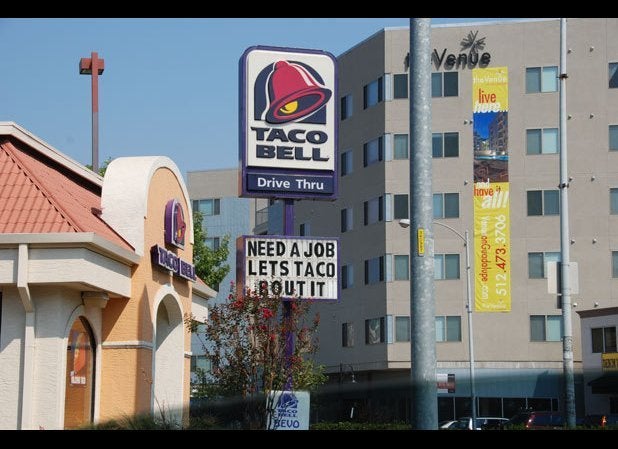
Over the years, Taco Bell has told us to "Run for the border," "Think outside the bun," and, most recently, to "Live Mas." Their branding has always been clear: Taco Bell is a place to break away from standard fast-food fare. While other fast-food chains generally sell the same burgers and fries or fried chicken and coleslaw, Taco Bell is a place for something a little spicy and different, something that bears little resemblance to actual Mexican food.
Taco Bell detractors have long complained that the giant chain was about as Mexican as apple pie, but those complaints haven't stopped the company from becoming the eighth most popular in the country, with 5,604 locations in all fifty states. We reached out to Taco Bell for comment on why that could be, but have not heard back at the time of publication. Defenders point to the number of Taco Bells in states with large Hispanic populations as proof that everyone, even folks with firsthand knowledge of authentic Mexican cuisine, eats burritos at The Bell.
But is that really true? Does the Hispanic population of a state affect its overall number of Taco Bells? Well, that's certainly not the case in Mexico. Taco Bell has long tried to actually move its gringo-ized menu south of the border and failed at every turn. "It's like bringing ice to Arctic," lamented pop culture historian Carlos Monsiváis when Taco Bell tried to open a Monterrey, Mexico location in 2007 after a 15-year hiatus. The location closed in 2010, proving yet again that Mexico just wasn't interested.
But what about here in America? Do states with higher Hispanic populations really have more Taco Bells?
The answer is yes, but it's also complicated. To conduct this experiment, we looked at the states with the most Taco Bells, and then analyzed both their Hispanic population and their overall population. We also compared the number of Taco Bells in each state with the number of Wendy's (the closest chain in size to Taco Bell, with 5,877 locations).
While California, Texas, and Florida have the taken first, second, and third place for the most Taco Bells and rank in the top 10 for the highest Hispanic populations, they also rank in the top five most populated states overall, meaning that more people in a state probably means more fast food in general. New Mexico and Arizona however, while home to some of the highest Hispanic populations in the country, rank 36th and 15th in overall population. Their numbers of Taco Bells, 46 and 192, correlate more closely to their overall population size than the higher percentage of Hispanic people. New Jersey, while 18 percent Hispanic, has just 99 Taco Bells. Meanwhile, eight out of ten of the country's most populated states made the list, and their number of Taco Bells was, in most cases, neck and neck with their number of Wendy's. Click through the slideshow of the top ten states with the most Taco Bells to examine the numbers a little more closely and settle the great Taco debate once and for all.





-Emily Alford, The Daily Meal
More Content from The Daily Meal: